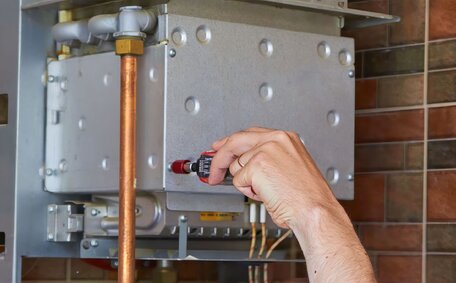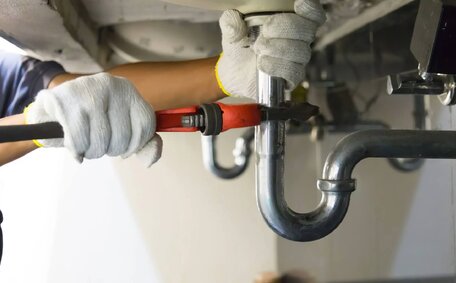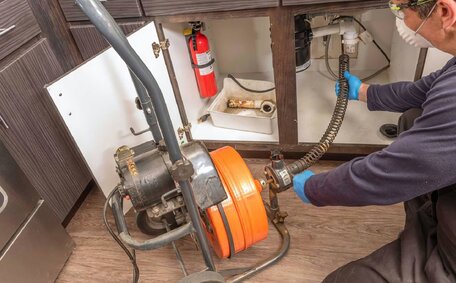Introduction to Hot Water System Placement
Optimally positioning your new hot water system is vital for boosting efficiency and lifespan by meeting safety requirements through adequate ventilation, clearance, and exhaust release.
Position the new hot water system to grant swift access to hot water in areas like bathrooms and kitchens, thus reducing heat loss with shorter pipework.
Selecting the best location for your hot water system requires careful consideration of the system type, whether it’s gas, electric, solar, or heat pump. Indoor hot water units may need extra precautions like leak trays or tempering valves. Outdoor units need weatherproofing appropriate for your house while guaranteeing your storage hot water collectors can fully capitalise on sunlight exposure.
Adhering to installation best practices boosts energy efficiency, mitigates leaks or corrosion, and prevents expensive relocations.
Key Factors Influencing Location Selection
Strategically positioning your hot water system in Dulwich Hill, Sydney, when upgrading requires consideration of several key factors:
Proximity to Points of Use: Place the system close to high demand areas like kitchens, laundries, and bathrooms to minimise heat loss through shorter pipe runs and provide faster access to heated water.
Access for Maintenance: Ensure sufficient clearance for servicing and repairs of the new hot water heater, with outside units needing weatherproof access. Account for future replacement and maintenance as recommended by your plumber.
Structural Support: Verify the location has sufficient structural integrity to bear the system’s weight. Bracing may be required on upper floors or elevated installations.
Exhaust Ventilation: Gas systems need proper exhaust venting and clearance from windows or intake vents. Ensure outdoor units won’t have exhaust flowing into living areas.
Safety Compliance: Indoor installations mandate the inclusion of a safe tray, optimal insulation, tempering valves, and a relief valve as part of other safeguarding measures as required by building codes. Outdoor water storage tanks also need weather and earthquake restraints for added safety.
Engaging with a plumber carrying leading brands, particularly a skilled Dulwich Hill craftsman, who can install a tailored pump hot water system, may enhance your property’s fit to your family size, water use, and budget, whilst adhering to regulations.
Accessibility and Ease of Maintenance
In choosing an installation location, ensure spacious clearance is available on all sides to accommodate servicing tailored to your needs, as well as carrying out necessary repairs. Refer to safety standards like AS/NZS 3500.4:2003 which recommends at least 500mm clearance, or more for larger units.
Outdoor units need weatherproof entry and ample space for safe maintenance, while for some, installing the water heater inside may be preferable. Indoor units will require removable panels or doors to access key components, along with provisions for future upgrades if sizing up from a smaller tank.
Technicians in the Northern Beaches must also cater for service space in your business above electric or gas control units, junction boxes, anodes, pressure relief mechanisms and additional maintenance components needing regular checks, which can be incorporated into your water heater system indoors for convenience. Leaving proper room around your hot water system makes regular maintenance faster and safer.
Thoughtful positioning in your residence offers ample space for all plumbing work to be conducted accurately with the necessary tools and gear, forestalling any inadvertent harm to property. It also reduces service costs when components can be easily accessed and replaced quickly without complications.
By planning for pump water heaters accessibility and serviceability during the installation process, you can maximise the longevity of your home’s heat pump and reduce disruptive relocations or modifications in the future.
Proximity to Water Usage Fixtures
Placing your system close to areas with frequent use of hot water, such as kitchens and bathrooms, significantly boosts efficiency. The shorter pipe runs to these fixtures minimise heat loss as various types hot water has less time to cool before reaching the tap.
For optimal performance, station the hot water heaters in the location your requirements dictate for a consistent hot water supply, ensuring the system can meet the demand efficiently. This provides faster access and reduces wasted energy reheating cooler water in the pipes. Check building codes as proximity rules differ across system types. Outdoor units may have stricter distance limits.
Ideally within 6 metres of bathrooms and 8 metres of kitchen sinks, installations directly inside wet areas can circumvent some tempering valve requirements. Contact Dulwich Hill’s leading plumbers to ensure placements meet regulations.
While closer proximity is beneficial, finding the right location for the system should balance usage needs, maintenance access, safety, and longevity factors. The experts at Dulwich Hill Plumbing can help identify the most suitable position to get your hot water unit to supply fixtures faster while maximising efficiency.
Structural Support and Clearance Requirements
When pinpointing a spot to get your system installed, ensure the area showcases sufficient structural integrity to support the weight. System types vary - small electric units may weigh 15-30 kg while large gas or heat pump tanks can exceed 150 kg when full. Consult manufacturer specifications.
Under building standards like AS/NZS 3500 and state plumbing codes, minimum clearances are required around the hot water system to allow safe access for installation, maintenance, and potential emergency repairs. AS/NZS 3500 recommends at least 500mm clearance on all sides, increased for larger units. The criteria for outdoor installations can vary, but they invariably necessitate weatherproof entry.
Adequate clearance facilitates routine anode rod replacement, valve servicing, and provides tradespeople sufficient room to safely move tools around the system without the concern that damage should occur. Installers can add structural bracing on walls or ceilings if required to securely bear the system’s full weight.
By verifying structural integrity and clearances upfront during your hot water installation, with needs considered thoroughly, ensure proper safety measures are in place to avoid unexpected leaks, failures or major relocations down the road. Contact Dulwich Hill’s leading plumbers to ensure your system location meets all mandatory building standards.
Ventilation and Exhaust Considerations
Proper ventilation is essential for indoor gas hot water systems to safely exhaust gases and facilitate maintenance, particularly in gas models. AS/NZS 5601.1 standards require exhaust flues above gas water heaters to safely remove combustion byproducts like carbon monoxide outside.
Flues should vent at least 500mm away from any openings, with proper clearances from eaves. For outdoor units, ensure that the exhaust is directed away from windows or vents to maintain a safe environment. Powerflue unit can actively force exhaust gases out through ducts to approved external termination points.
Installations must prevent backdrafts to ensure that flue gases do not enter living spaces. Consult gas plumbers to tailor exhaust setups to your unit’s specifications and ventilation needs while meeting strict ventilation codes.
Accounting for Noise Impacts
Consider the noise impacts on nearby properties when installing a heat pump hot water system outdoors. Verify local council regulations for residential noise limits.
Position the system away from bedrooms or living spaces. Heat pumps emit operating vibrations and fan noises louder than traditional units. Choose quieter inverter compressor models to mitigate noise concerns.
Adding sound blankets can dampen external noise. Ventilation grilles angled away from the property boundary also direct sound upwards. Installation on noise-dampening pads minimises vibration transfer through walls or the ground.
Proper placement and sound-reduction strategies enable your new hot water system to operate quietly and efficiently. Contact Dulwich Hill’s leading plumbers to ensure your outdoor system meets noise regulations.
Compliance with Regulations and Standards
When installing a hot water system in Dulwich Hill, Sydney, compliance with plumbing regulations and Australian Standards is mandatory. Key codes include:
- AS/NZS 3500 Plumbing and Drainage Set
- AS/NZS 3500.4:2021 Heated Water Services
- AS/NZS 5601 Gas Installations Set
- National Construction Code Volume Three – Plumbing Code of Australia
All installers must be duly licensed and provide certified installations approved for use.
Indoor tanks require overflow provisions, leak trays, and insulation in accordance with AS/NZS 3500.4, Section 5.
Compliance with regulations ensures the hot water system operates safely and efficiently throughout its lifespan. Dulwich Hill’s leading plumbers stay current on changing legislation to guarantee your system meets the latest mandatory standards for quality and reliability.
Safety Valves and Overflow Prevention
Safety valves with an automatic shut off feature are a critical component for all hot water systems to prevent excess pressure buildup and ensure temperature water control. The primary type hot water system safety valves encompass:
- Tempering Valves: Mix cold water to ensure hot water delivered to fixtures never exceeds 50°C as higher temperatures increase scald risk.
- Pressure Relief Valves: Open to discharge water if tank pressure exceeds preset limits between 500 - 1000 kPa before reaching critical failure points.
Tempering valves must be installed on pipes to regulate temperature for all areas requiring hot water. PRVs need to terminate safely to drain in compliance with AS/NZS 3500.4 standards. This prevents property damage if valves release.
If you have questions about continuous flow systems, a common hot water solution, they may incorporate expansion control valves, which mitigate rising tank pressure due to thermal expansion as they heat water. All valves require annual maintenance to ensure safe functioning.
Tanks need overflow provisions that lead to approved drainage systems to prevent flooding risks. This serves as a secondary safeguard should inlet valves fail. Compliant installation of safety valves and overflows prevents catastrophic tank failures and contributes to a safely maintained, longer lasting system.
Venting Gas Systems Outdoors
When replacing an old system with an outdoor heat pump hot water unit, proper exhaust venting is essential for safe byproduct removal and compliance with ventilation codes.
AS/NZS 5601.1 mandates a flue above outdoor gas heaters, which can effectively discharge exhaust gases safely away from any openings or vents. Powerflued units channel exhaust through ducting to an external outlet.
Ensure flue vents are at least 500mm from boundaries and maintain clearance from eaves as specified in installation guides. Vent positioning should prevent exhaust from entering living areas or flowing in through windows.
Engage with Dulwich Hill’s certified gas plumbers to install your hot water systems, ensuring compliance with AS/NZS 5601 and ALGWA standards. Proper materials, seals, piping gradients, termination fittings and backdraft prevention provisions ensure optimal, hazard-free operation.
Optimizing Efficiency and Location
Correctly placing your solar hot water system is vital for optimal efficiency. Solar collectors should face true north and be tilted at the local latitude angle for best sun exposure throughout the year. In Sydney’s Dulwich Hill area at 34° south, the ideal collector tilt is 34°.
Collectors facing north optimise winter output from the lower sun path, with the tilt enhancing summer efficiency. Avoid shading from trees, chimneys and structures that would block direct sunlight.
Strategically placed systems streamline piping, reducing heat loss between collectors and the storage tank. Elevated roof spaces promote natural upward circulation into the storage tank.
The NSW government’s Empowering Homes programme offers homeowners rebates for the professional installation of energy-efficient solar and heat pump storage water systems. Certified installers can advise on qualifying products and available savings.
Properly sited solar heat pump collectors harness more solar energy, yielding savings on water heating bills. Dulwich Hill’s certified experts provide free consultations to map out an optimal system location tailored to your roof space and household needs.






